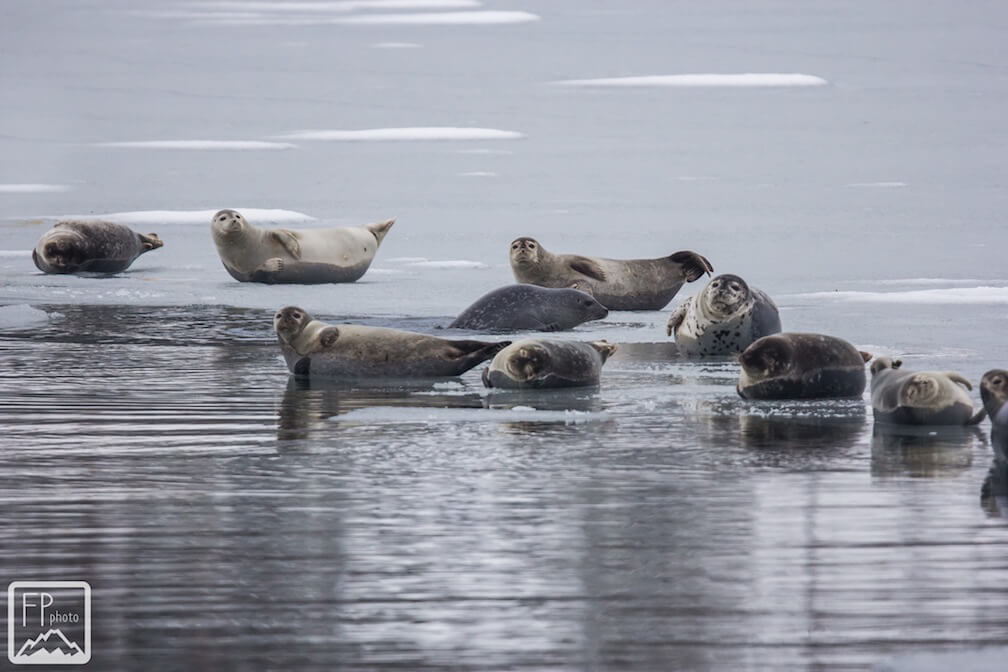For residents of the Gaspé, whales are still entertaining observers, while elsewhere sightings are becoming increasingly rare.
On November 28 at around 2 in the afternoon, a resident of Cap-des-Rosiers notes four passing fin whales. “I would venture to say there was a calf with them,” she says. That same day in Gaspé Bay, on the other side of the Peninsula, two humpbacks rest on the surface like huge floating tree trunks. Then, the whales “wake up” and take a dive. A third humpback whale appears, slapping its pectoral fins on the surface. What energy!
Off the coasts of three different villages, humpbacks are soaring! One humpback is seen breaching off Cap-des-Rosiers at least three times on November 28. On November 29, a similar observation is made near L’Anse-au-Griffon, as well as in Percé, where one person visiting the pharmacy was in for quite a surprise: from the window, he is able to observe a humpback slapping its tail. The perfect remedy to lift one’s spirits!
Is breaching physically demanding for a humpback? One study has calculated that a single breach of an adult humpback requires about 10.3 megajoules, which is equivalent to the energy expenditure of an adult marathon runner!
In relative terms, however, it is more difficult to calculate, but the fact remains that it takes a tremendous amount of physical effort to achieve the feat of lifting one’s multitonne body out of the water.
Why spend so much energy breaching just before migration, when one would think that whales would prefer to “top off their tank” as much as possible? Hard to say. One study examined breaching in different species. The authors were surprised to witness mothers and babies just a few weeks old jumping repeatedly. They therefore hypothesize that repeated breaching plays a sufficiently important social role to be worth the energy expenditure and that it may also be used for the development of certain functions in calves or to communicate a clear sign of vitality in adults.
In Pabos, a minke whale is swimming vigorously. Minke whales are also known for their breaching. The same study monitored 22 breaches performed by two tagged minke whales. Compared to the other species studied (humpback whale, Bryde’s whale, grey whale, right whale and sperm whale), minke whales manage to obtain the speed and impulse they need to propel themselves out of the water in an average of 7 metres. They can even do so from a depth of just 2 metres!
For other inhabitants of these same villages, zero observations! Spotting a whale on the horizon requires that one be looking at the right place at the right time. So just because we know that whales are in the area doesn’t necessarily mean we will see them. But the more you watch, the luckier you get!
Minke whales and belugas on the North Shore
In Quebec’s Côte-Nord region, where whales are fewer and fewer in number, one must be even more attentive to catch sight of one. On November 30, two research assistants from the Group for Research and Education on Marine Mammals (GREMM) take advantage of their lunch break in Tadoussac to watch a small group of belugas swimming in the mouth of the Fjord. In Les Bergeronnes, on December 2, a birder also spotted belugas as well as a lone minke whale.
In Baie-Comeau, two minke whales are observed riding the waves. To avoid getting a mouthful, they need to hold their heads higher out of the water when they surface to breathe, which makes them all the more conspicuous.
In Port-Cartier, one fin whale passes offshore. “Nothing else to report,” laments one observer.
Basking on the ice
In winter, observing seals is sometimes made easier by the presence of ice along the coast. On November 27 at the mouth of the York River in Gaspé Bay, some fifty harbour seals bask on the ice. Two days later, about fifteen seals are resting at the same spot. This time, the observer thinks she sees harp seals amongst the harbour seals. “Is it possible that the two species coexist?” she ponders. It’s not impossible, but it is unlikely. Seals of different species tend not to share haulouts.
In the water, seals are more difficult to spot, especially when they only stick their heads out long enough to breathe. Harp seals, on the other hand, can stand out when they swim on their backs. Their head in the air resembles a bottle floating on the surface and their white belly makes them easy to spot. On the Saint-Siméon – Rivière-du-Loup ferry, one lucky individual saw three harp seals during the crossing.









